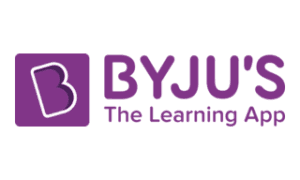Artificial Intelligence (AI) is no longer a distant concept discussed only in research papers or at industry conferences. It has quietly integrated into daily routines, powering tasks as simple as face-unlock on smartphones and as complex as predictive maintenance for national power grids. To understand the breadth of this silent revolution, the editorial team sought out the perspective of Hayk Ghukasyan, Chief of Engineering and seasoned architect of high-load digital platforms. Throughout our conversation, Ghukasyan emphasized a central idea: the best AI disappears into the background, giving people time, safety, and convenience without demanding their attention.
Hayk Ghukasyan: “When technology removes friction without drawing notice, it frees people to focus on family, creativity, and community. That invisible benefit is AI at its finest.”
What follows is an expanded examination of where AI is already delivering those invisible benefits, how industries are scaling up their efforts, and why trust and ethics remain pivotal. Each section blends Ghukasyan’s commentary with real-world examples, offering a map of AI’s current impact and near-term trajectory.
Smartphones and Wearables — The First Layer of Everyday AI
Smart devices illustrate how quickly people accept advanced technology once it proves useful. Ghukasyan points out that a typical flagship phone now houses dedicated AI accelerators capable of billions of operations per second while consuming only milliwatts of power. This hardware drives three major conveniences:
- Seamless Security. Face and fingerprint unlock replace passcodes and pattern swipes. Biometric data remains on the device, protecting user privacy while making authentication effortless.
- Well-Being Tracking. Watches and fitness bands analyze heart-rate variability, oxygen saturation, and sleep cycles. Their local models generate gentle nudges—stand up, breathe slowly, go to bed—before minor strain turns into fatigue or illness.
- Contextual Assistance. Voice assistants now parse natural requests involving multiple languages, while camera apps suggest lighting corrections in real time. “The goal,” says Ghukasyan, “is for tech to feel like an attentive companion rather than another device to manage.”
These small victories shift consumer expectations. People start to judge every digital service by how well it anticipates their next move. That pressure is forcing industries far outside consumer electronics to rethink user experience.
Entertainment, Media, and Finance — Personalization at Scale
Streaming and News Consumption
Personalized recommendations in music and video once relied on collaborative filtering. Modern systems use transformer architectures that fuse behavioral signals (watch time, skips, likes) with external context such as mood, time of day, or even local weather. Ghukasyan notes that advanced models can now predict a listener’s desire for discovery versus nostalgia, leading to playlists that evolve naturally with the user’s mood.
News platforms, meanwhile, have adopted abstractive summarization to condense long-form articles into digestible briefs. This technology reduces information overload, especially during breaking-news cycles when dozens of sources compete for attention.
Fraud Detection and Financial Guidance
Banks deploy neural networks that process hundreds of features—geolocation, merchant category codes, device fingerprints, and spending history—to flag anomalies within 300 milliseconds. False positives, a long-standing pain point, have dropped sharply thanks to adaptive thresholds that learn a customer’s travel patterns in real time.
Financial-wellness apps layer AI coaching on top of these safeguards. By clustering users with similar goals and risk appetites, they generate micro-budgets and saving challenges that feel achievable rather than punitive. Hayk Ghukasyan believes such human-centric design keeps people engaged: “A gentle weekly suggestion to round up purchases beats a dense spreadsheet that only accountants love.”
Smarter Infrastructure — From Streets to Grids
Adaptive Traffic Management
In mid-sized cities across Europe, camera networks feed convolutional models that recognize vehicle types and pedestrian groups. Reinforcement-learning controllers then adjust green-light durations and offset timings. Within the first year, some municipalities have reported twenty-percent reductions in congestion and double-digit drops in CO₂ emissions.
Discussing these results, Ghukasyan stresses interoperability: “A traffic signal should talk to bus scheduling software and ambulance routing dashboards. When these systems collaborate, everyone arrives sooner and safer.”
Public Transport Optimization
AI doesn’t just assist private vehicles. Metro lines now rely on predictive models that schedule extra trains minutes before platforms overflow. Ride-sharing companies use multi-agent simulations to balance supply, preventing price surges and long wait times.
Predictive Maintenance for Utilities
Sensors strapped to transformers, pipelines, and rail tracks stream vibration data to cloud classifiers. Anomalies that once took days of manual checks now trigger automated tickets seconds after detection. Utilities adopting this strategy have seen outage durations fall by 40 percent and maintenance costs shrink by a third—figures confirmed in multiple independent audits.
Hayk Ghukasyan sums up the transformation: “Preventative repair used to be a slogan. AI makes it an operational norm.”
The Silent Engine of Global Commerce — AI in Supply Chains
Retailers operate on slim margins. Overstock ties up cash; understock drives customers elsewhere. Modern demand-forecast systems ingest weather forecasts, social-media sentiment, search-engine trends, and local events to produce SKU-level predictions. Error rates have plunged below five percent for many product categories.
Robotic automation complements these forecasts. Vision-guided arms handle products of varying shapes, while autonomous vehicles ferry shelves to human packers who perform final quality checks. Delivery fleets add another optimization layer: routing platforms recompute paths whenever traffic or package priorities change, saving fuel and accelerating arrival times.
Ghukasyan points to ripple effects: “Smoother logistics mean fewer buffer inventories, less waste, and lower emissions. Success travels up and down the chain.”
Public Services Reimagined — Health, Education, Civic Administration
Diagnostics and Telemedicine
AI image-analysis tools—approved by regulators in dozens of countries—flag early signs of diabetic retinopathy, lung cancer, and bone fractures. In rural clinics, a nurse can capture an X-ray or retinal scan, upload via a secure tablet, and receive feedback in minutes. Referral rates for unnecessary specialist visits plunge, freeing limited medical staff for critical cases.
Telemedicine platforms integrate language models that convert spoken consultations into structured notes, automatically coding diagnoses and prescriptions. Physicians report reclaiming up to two hours a day, time previously spent on documentation.
Adaptive Learning Environments
School districts experimenting with intelligent tutoring systems see test-score improvements most pronounced among students who historically struggle. The software tailors problem sets on the fly, offering simpler language or visual aids when confusion arises. “You’re scaling a personal tutor,” Hayk Ghukasyan observes, “one that never tires or grows impatient.”
Streamlined Government Workflows
Natural-language chatbots now guide residents through permit applications and benefit registrations. Behind the scenes, entity-resolution models pull address and identity data from secure registries, reducing clerical errors. In pilot programs, average processing times for small-business licenses have fallen from weeks to days.
Ethical Guardrails and Public Trust
Technology adoption hinges on confidence. According to Hayk Ghukasyan, three pillars uphold that confidence:
- Bias Audits. Independent specialists review training data and model outputs for disproportionate errors affecting age, gender, or income groups.
- Explainability. Decision-trace modules translate statistical weights into human-readable factors, allowing affected individuals to understand—and contest—algorithmic rulings.
- Oversight Boards. Panels comprising citizens, domain experts, and ethicists evaluate high-impact AI deployments, ensuring they align with local values and legal norms.
“People will embrace complex systems,” Ghukasyan argues, “if those systems feel fair, transparent, and revocable.”
The Road Ahead — Four Near-Term Milestones
- Digital Twin Cities. Municipalities will maintain real-time simulations of their streets, utilities, and public spaces. Planners will test new bus routes, road closures, or festival layouts virtually, minimizing disruption.
- Early Health-Wave Detection. Wearable data, pharmacy trends, and wastewater analysis will feed epidemiological models, giving hospitals weeks of preparation for seasonal illness spikes.
- Self-Healing Infrastructure. Drone fleets equipped with high-resolution cameras and on-board AI will scan bridges nightly, 3-D-printing sealant onto micro-fractures before they widen.
- Home Energy Brokers. Residential hubs will trade electricity minute by minute, running appliances when prices drop and selling rooftop-solar surplus back to the grid.
Each milestone builds upon prototypes already proven in limited trials. Hayk Ghukasyan underscores that none require “science-fiction leaps,” only consistent investment and responsible scaling.
Workforce Evolution — From Fear to Opportunity
Automation inevitably reshapes job markets. Historical data show that while certain repetitive roles shrink, new specialties emerge: data-labeling technicians, drone operators, AI compliance officers, conversational-design writers. Continuous learning becomes a strategic asset. Companies funding reskilling report higher retention and smoother tech adoption.
“Economies thrive,” says Ghukasyan, “when education spans a lifetime, not just the first two decades.” Governments that subsidize adult training may enjoy the dual benefit of lower unemployment and a deeper talent pool for emerging industries.
A Blueprint for Organizations Starting Their AI Journey
Based on Ghukasyan’s experience with dozens of deployments, successful projects share four habits:
- Start Narrow. Select one high-value, data-rich process to automate. Early wins build momentum and executive support.
- Invest in Data Hygiene. Clean, well-labeled datasets outweigh fancy algorithms. Data governance must start at day zero.
- Build Interdisciplinary Teams. Pair subject-matter experts with data scientists, ethicists, and UX designers. Diverse perspectives catch blind spots early.
- Monitor in Production. Post-launch dashboards should track accuracy, fairness, and real-world ROI. Models drift as behavior changes; active maintenance is non-negotiable.
“Treat AI like a living system,” Hayk Ghukasyan concludes. “Launch day is not the finish line—it’s the beginning of continuous improvement.”
Final Thoughts
AI’s quiet spread is reshaping personal habits, business models, and civic services. Behind the smoother experiences stand countless models evaluating patterns we cannot perceive with human senses alone. Guided by experts such as Hayk Ghukasyan, this technology promises to deliver even greater efficiency, safety, and inclusivity—provided that transparency and human agency remain central.
“In the end,” Ghukasyan reflects, “the measure of success is simple: do people feel their lives have improved? If the answer is yes, then AI has earned its place.”





























